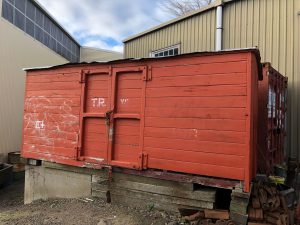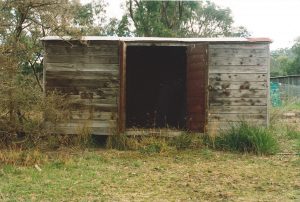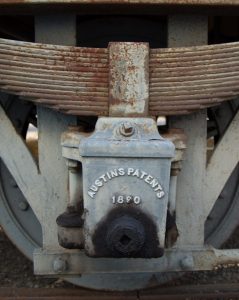A159, C589
A159 was built in 1890, while C589 was converted from A163 in 1957. Both represent large classes first introduced in 1885 with the Tasmanian Government Railways (TGR). A total of 488 A class were built by 1926 and 641 C class by 1958. The C class have higher sides and ends than the A class. Used for general freight and coal haulage throughout Tasmania, the last of these classes were withdrawn in 1978. Both were obtained from Australian National Railways (ANR) in 1979.
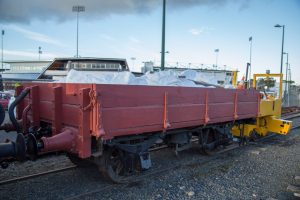
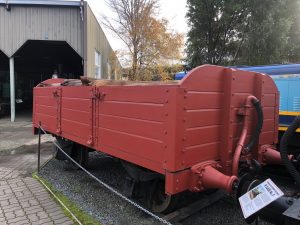
E195, E242
These vans also represent a large class of Tasmanian Government Railways (TGR) vehicles that were widely used, and had a number of design variations from their introduction in 1885 to when the last vans were built in 1961. The last of the class was withdrawn in 1978.
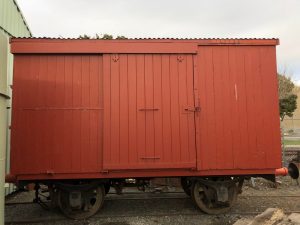

Travelling Crane No. 2
Former Tasmanian Government Railways (TGR) crane built by Stottert & Pitt in1888. This was one of six cranes operated by the TGR for mobile crane work including derailment recovery. No.2 was out of use by the 1960s and was donated by the TGR in 1972.

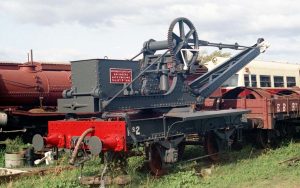
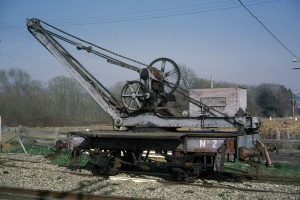
E11
The Emu Bay Railway (EBR) had a fleet of similar four-wheel vans, chiefly for use on the West Coast lines. E11 was withdrawn during the 1970s and was donated by the EBR.
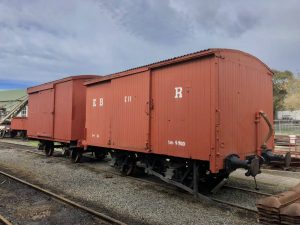
C22
Originally built for North Mount Lyell Railway 1899 as an ore hopper wagon, it was acquired by the Emu Bay Railway (EBR) and rebuilt as an open wagon for use on the West Coast lines. It was donated by the EBR.
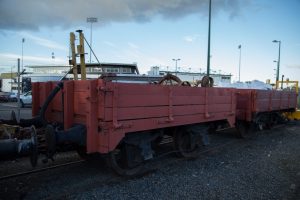
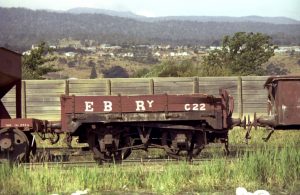
CC262
One of a large class of 300 open wagons built between 1940 and 1952, CC262 was built in 1950. It was used by the Tasmanian Government Railways (TGR) to carry general freight, coal and fertiliser traffic throughout Tasmania. It was withdrawn from service in 1987 and donated by AN Tasrail.
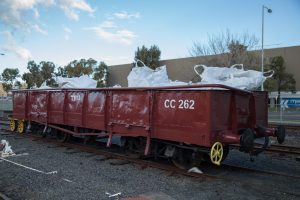
QG17
Built in 1956 by the Tasmanian Government Railways (TGR), it is one of a class of 32 similar grover bogie wagons used on departmental ballast trains. It was withdrawn from service in 1989 and donated by AN Tasrail. It spent many years on lease to the West Coast Wilderness Railway at Queenstown and returned to the museum in March 2023 and has been repainted by our volunteers.

E+10
Originally built 1876 as a four-wheel sheep wagon for the Tasmanian Main Line Railway Company (TMLR), before being converted to a covered van by the Tasmanian Government Railways (TGR) for the Bellerive–Sorell line. Interestingly, the original steel frames remain behind the outer wooden cladding. Following the closure of this line in June 1926 the body was sold for private use and was later donated to the society in 1994. It does not have an underframe and is used for storage purposes.
